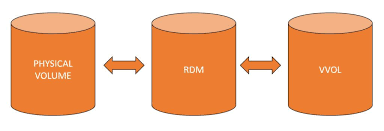I wrote an article a few weeks ago after VMware introduced VMware Go at VMworld 2009. It just got published today.
The Article
Basically, I talk about how VMware Go, may not be the answer in fighting the free offerings of Microsoft and Citrix, but it could be. I know that VMware Go isn’t being presented as a central management component for many free ESXi hosts, but rather a vessel to get things started.
My friend John Troyer from VMware posed this question to me on twitter:
jtroyer@jasemccarty isn’t VMware Go more of a config/get started tool rather than a general mgmnt tool? Not sure you can compare to vCenter.
He is completely correct. The article wasn’t really geared toward VMware Go versus vCenter, but rather VMware Go (free offering) versus Microsoft’s and Citrix’s free management tools.
How I would go about things if I was just starting
As an IT guy, I’d have to say, I (personally) probably wouldn’t start with a web service to setup a couple ESXi boxes. I’m going to go the old fashioned route to get things going. Use the vSphere Client to configure/manage the host, and create/manage guests. As I would when I purchase VMware licenses.
But that’s me…
I think if VMware provided some crippled vCenter type application to somewhat manage the free ESXi platform, more people would use it. Microsoft already has many inroads given the wide use in today’s enterprises. This makes it very easy for anyone with a Microsoft background to use their virtualization product.
One of the early battles of the virtualization war
I remember when VMware had VMware GSX and ESX as their primary offerings. Microsoft had Virtual Server. VMware GSX was “mid-grade” and Virtual Server was marketed as “mid-grade” as well. GSX had 2 price points, depending on the number of processors used on the host. Microsoft’s Virtual Server had 2 price points as well.
VMware GSX was something like $1400 for up to 4 processors and something like $2800 for more than 4 processors. Virtual Server was something like $500 for up to 4 processors (standard) and something like $1000 for more than 4 processors (enterprise). Don’t quote me, those are numbers off the top of my head, and I’m not 100% on the accuracy. Microsoft dropped the price from $500/$1000 to $99/$199 respectively, in an attempt to knock VMware out of the “mid-grade” market. VMware answered with GSX (rebranded as VMware Server) for free. Needless to say, Microsoft followed suit by giving Virtual Server away for free.
The battlefront, today
With Hyper-V R2 and XenServer 5.5, along with their free features, and free management (to a point), Microsoft and Citrix have upped the ante, and this is where VMware is getting hurt the most. I talk to people who are just getting into virtualization, and they talk about VMware vs Microsoft vs Citrix, and they always talk about price.
Don’t get me wrong, do I think that VMware needs to give away advanced features? Not at all. Would giving away vCenter Server make a dent in Microsoft and Citrix’s inroads to VMware’s market share? Definitely.
vCenter Server is a trivial cost when it comes to implementing a vSphere environment. As more free ESXi servers proliferate, the more need for management is there. If applications are going to be run on free ESXi, at some point, management is going to say “Hey we need some support for this environment.” When that happens, it could be likely that the same management will want to see what else VMware has to offer. These other offerings are where VMware really excels in what it offers.
Who else offers products like HA, DRS, FT, VMotion, & SVMotion? Well who else offers mature versions of these products? Nuff said.
So what’s next? Who knows, but with VMware, Microsoft, and Citrix battling it out, it will continue to be exciting.
Check out searchvmware.techtarget.com to read the article.

